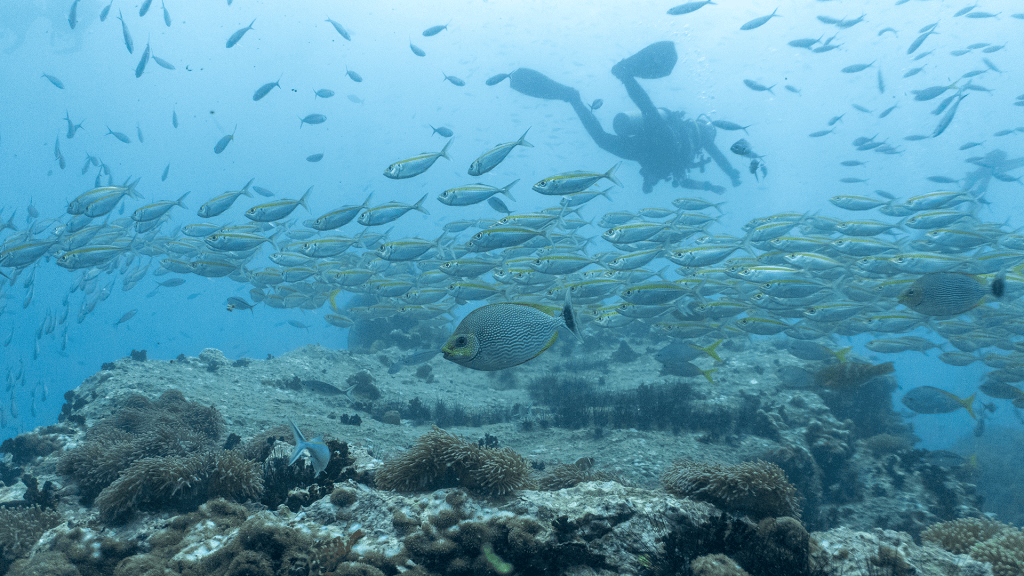Java rabbitfish

The streaked spinefoot (Siganus javus), also known as the Java rabbitfish, has a tall, laterally compressed body, with its height measuring about 2–2.3 times its body length. Its coloration features a bronze-colored back that fades to white on the belly and chest. The head and upper body are covered in numerous small white spots, which merge into wavy lines along the sides. The eyes are light brown, the pectoral fins are transparent, the pelvic fins are white, and the caudal fin has a darker shade. Adults typically reach a length of 30 cm, though some individuals can grow up to 53 cm.
This species is herbivorous, primarily feeding on substrate-attached algae as well as floating fragments of seaweed.
Like many marine fish, the streaked spinefoot reproduces by releasing eggs into open water, where they remain freely suspended until hatching. In captivity, breeding this species is challenging and rarely attempted by aquarists.
The streaked spinefoot inhabits shallow coastal waters, brackish lagoons, as well as rocky and coral reefs. It is commonly found at depths ranging from 2 to 20 meters.
These fish prefer to stay in small groups of up to 10 individuals. During resting periods, they may hover in the water column at depths of 2 to 6 meters.
Siganus javus possesses venomous spines on its dorsal, anal, and pelvic fins. Stings from these spines are painful for humans but are not considered dangerous.
